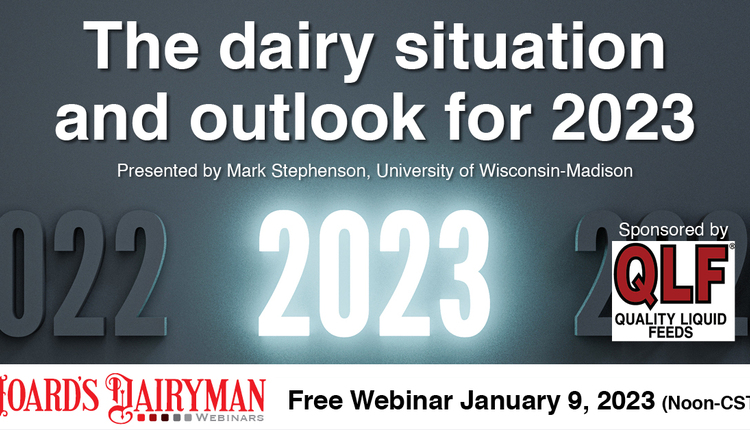
In your March 25 Hoard’s Dairyman Intel, “Consider economic culling,” the one item not taken into account is the size of the cow. If a cow is 1,325-pound (600-kilogram) and produces 55 pounds (25 kilograms) of milk with a 4.2 percent butterfat, it's equivalent to an 880-pound (400-kilogram) cow producing 37 pounds (16.66 kilograms) of milk. This point is not made in the article or considered in the model.
Needless to say, also not stated in the model is the cow’s conditioning. For example, a thin 1,325-pound (600-kilogram) cow could actually have a frame for a 1,450-pound (660-kilogram) cow — if one body condition score (BCS) point down on a five-point scoring basis — but a good condition 880-pound (400-kilogram) cow will be the same 880 pounds as per her scaled weight. The thin cow will eat for her frame size (body condition score corrected weight) and then she is no more equivalent in both production and intake as a percentage of weight.
In my view, this is most important. In many cases, it’s the very large 1,800-pound (820-kilogram) cow producing only 55 pounds (25 kilograms) of milk that is the most uneconomical on the farm and this often is never pointed out to the farmer.
It is for this reason that most of my 300 clients have their cows weighed postmilking at every milking session. I do feel that this point should be made to your target audience.
Philip Scher, South Africa
The reader makes a fair comment.
A complete culling decision has many dimensions, including the body size of the cow. That impacts the amount of feed the animal will eat for maintenance and the body score of the animal. This, in turn, should tell us something about whether the cow has been consuming feed to add to body fat versus production of milk.
Also, when making a culling decision, we should consider whether the animal has good genetics, whether she is carrying a calf, and what our replacement stream of heifers looks like on the farm.
When we build decision tools, we always consider the tradeoff between the most accurate decision guide we could produce and the ease of use. Adding the animal’s frame size and body condition score would have added a third (weight) and even a fourth dimension (body condition) to the matrix table, and that was not something we wanted to do at this time.
We expect that users will informally consider the other dimensions of culling decisions to more completely evaluate individual animals suggested as culling candidates by the decision tool.
Mark Stephenson, Center for Dairy Profitability, University of Wisconsin-Madison








